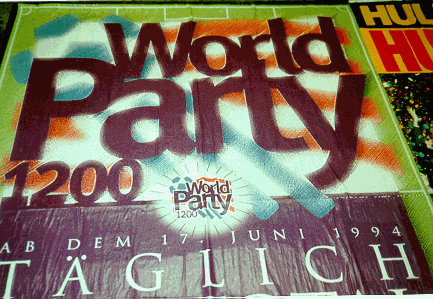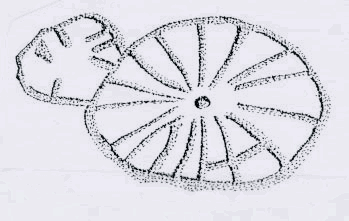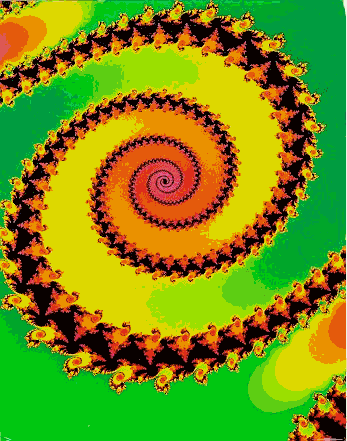 |
The
World Party
web page There is no World Party yet. It is just an idea. |
| by Chris Chase-Dunn and Elson E. Boles November 1, 1999 /archive/praxis/wp/index.htm | |
 |
The
World Party
web page There is no World Party yet. It is just an idea. |
| by Chris Chase-Dunn and Elson E. Boles November 1, 1999 /archive/praxis/wp/index.htm | |
| Starters | Early Discussions | Recent Critiques | What's next? |
|
|
Bibliography | ||
| Print
this page as text:
(opens file in associated program) |
|
|
|
For starters, we might consider W. Warren Wagar's, A Short History of the Future (University of Chicago Press 1999). Wagar’s book is a science fiction novel about what might happen on earth over the next 200 years. It is written from a world-systems perspective. Here is a brief summary with reference to the World Party:
The World Party in A Short History is formed in the 2030s by students and workers in many countries who have determined that capitalist globalization is destroying people and the environment and that modern civilization is on a path of collapse. The point is to form a political party that can help build a democratic and socialist global commonwealth. In 2044 a nuclear war breaks out among core powers. The U.S. has elected a populist president who allies with dissenting peripheral and semiperipheral countries. There is a near civil war within the U.S. but the new populist government wins. The capitalist core states decide that this is unacceptable and launch a preemptive nuclear strike.The U.S. president has a hunch that a devastating attack is imminent and sends two nuclear subs out to sea an hour before the attack occurs. New York, Washington and Los Angeles are incinerated, but the U.S. military machine, now staffed and operated mainly by Black, Latino and Asian Americans, succeeds in surviving and fighting back. World War III brings the core powers of the northern hemisphere to dust. After this disaster most of the surviving world populace, led by the World Party, mobilizes to construct a world state that can outlaw and prevent wars of mass destruction, create a sustainable world economy and redistribute the world’s wealth on a much more egalitarian basis.
 |
Several discussions of this idea have been held. The first one that we know of was at the World Congress of Sociology in Bielefeld, Germany on July 20, 1994 (see attached). Since then there have been similar small group meetings at the American Sociological Association in Los Angeles (August 8, 1994) and at the International Studies Association meetings in Washington in March of 1995.
At the 1994 ASA meeting a rumor circulated in the Marxist Section to the effect that the World Party is "too Stalinist." Participants in our small group meeting were Vince Puchala, Buz Zelditch, Tom Hall, Al Bergesen, Terry Boswell, Chris Chase-Dunn, and Wally Goldfrank. Wally contended that we should join existing transnational political organizations such as Greenpeace rather than trying to form a World Party because parties are organizations for contending for power but there is no world state within which one might contend for power.
At an International Studies Association meeting, political scientists pointed out that many world parties -- in the sense of transnational political organizations-- have been created in past centuries, and that many more are emerging in the current era of globalization. David Wilkinson dashed off a "draft platform" for the Italian Section of the Party of World Unity (see attached).
At the American Sociological Association meeting in Washington DC in August of 1995 there was a session on the program that focused on world-system praxis. W. Warren Wagar presented a paper entitled "Toward a Praxis of World Integration" and several scholars and activists critiqued his paper. Out of that session came the materials for a special praxis section of the Journal of World-Systems Research (Volume 2, 1996) that contained Wagar’s paper and critiques by thirteen scholars and activists (see attached).
 |
"This model is the most complete you have presented to date, but it still seems rather amorphous. You keep saying that there is potential for a broad coalition, consensus, mobilization, and so on. But can you offer a more concrete analysis, even in retrospect from a hypothetical post-revolutionary vantage point, of how the relevant social forces and institutions are supposed to interact? What would be the chapter headings of a history book written five years after victory?What's Next?Any revolutionary history involves specific social sectors, crises, exploitation of particular cleavages, framing of appeals to political subcultures, dynamics of relative group leverage, elite splits and defections, ranking of priorities, issue linkages, constituency side-payments, capture or incapacitation of the coercive apparatus, negotiated settlement pacts, phases of coalition formation and disintegration, empowerment of counter-elites, management of reactionary insurgency, etc. My apologies if I sound too much like a social scientist, but I doubt that any movement is going to succeed simply by taking the most inclusive, optimistic, and aggregative of views.
Can you sketch out for me even one scenario of how this revolutionary process is supposed to work? At times it seems that you are resting all hopes on appealing to public opinion and winning elections, after which the whole system magically responds to the popular will. It sounds like a cross between Perot's United We Stand America and Allende's Unidad Popular, neither of which figure in history as great successes. Frankly I doubt the hypothetical movement could even win Congressional representation, given the political culture and structure of electoral incentives in the United States or anywhere else in the G7, much less majority power for long enough to undertake irreversible changes. One plausible scenario, that's all I ask--and from whatever theoretical (or atheoretical) perspective you like...." Adam K. Webb Department of Politics, Princeton University
We propose to discuss the issue of the World Party again on WSN this fall to bring the discourse up to date. The discussion will proceed beginning on Wednesday November 10, 1999.
If you are interested in helping form
a World Party with objectives that include greater world equality and a
sustainable global economy, we welcome your participation.